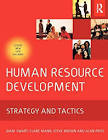|
The Trainers HandbookChapter 5 - Evaluating Your EffectivenessLevel Two: Immediate Application on the JobWhat happens to your trainees when they leave your course and return to their jobs? Your task was to change their behavior. You can document that youve given them new skills by asking them to perform those skills during the training. When they leave you, they have the skills to do the new work required of them. But what happens to those skills when they return to their jobs? All too frequently their supervisor says, Forget all that stuff you learned in training. Heres how youre gonna do the job. . . . and all of your careful training is wasted. If you find yourself in this predicament, remember that you are a service function, not a judicial system. It doesnt matter if your way is right. Your job is to see that the training is consistent with the on-the-job demands that are put upon the workers once they have completed your training. It is on the job that most of your trainees will actually master the skills youve taught them, and so a formal On-the-Job Training (OJT) program becomes the prime means of level-two evaluation. Chapter 13 covers in detail how to go about setting up an OJT function. Because you are turning your trainees over to them, supervisors will be your major source of on-the-job evaluation. This is why it is vital to seek out supervisors in the needs analysis process and gather their input. They are the ones who can make your training workor fail to workfor the organization. You must provide special training classes for the supervisors. Show them how to evaluate the trainees and coach them on the job. This will standardize the approach for you, the supervisors, the trainees, and the company. If possible, change your course to match the supervisors procedures. Talk with the supervisor and get his or her input. Explain your position as one of serving, and nail down what should be taught. If the supervisor is a maverick, try to persuade him or her to go with your way. See if the other supervisors can bring the maverick in line. Failing that, teach both ways so trainees wont be confused. Of course, if the supervisor wants to do it one way and your manager wants it done another way, you have an organizational problem, not a training problem. I had a client who planned to train all of the workers in his companys very large plant. He didnt want to train managers or supervisors, only the frontline workers. I had to point out to him that if the supervisory staff didnt know what the workers learned, they would look foolish in their charges eyes. Rather than appear foolish, they would denigrate the training and see to it that the workers couldnt use what they would be taught. In order to save face they would completely sabotage the efforts of training. You must always train from the top down. Bottom-up training doesnt work. If you run into supervisory resistance, youll need strong management support to retrain or bring the supervisor in line. Bring the supervisor to the training and let him or her coach your trainees in class. This will help you gain respect and cooperation. You can also retrain the supervisor to the standard way. Supervisors will be more cooperative if they decide which way will become the company standard. In any case, work closely with the supervisors to define the need for training, to develop the course materials, and to create the training itself, and then train them to coach and reenforce what has been learned in the workplace and your training will be very successful. This is the answer to the problem of the transfer of learning to the job. You still must evaluate performance on the job and document that transfer of learning. The process is simply one of repeating your needs analysis. Whatever data you studied in the first place to define the training need must now to be monitored to discover what impact your training has had on the job. However, there are a few problems you will probably encounter in doing so. People grow and change constantly. Many things in our daily lives impact on our behavior. In the work environment, training is only one cause of change. Consequently, posttraining evaluations are difficult to compile. How can we know:
The task is complicated further by a gradually diminishing population. True, we may train more people, but over the years each group grows smaller as people retire, move, or change jobs. Yet it is obvious that some form of posttraining evaluations is needed. If you are happily training hundreds of employees and have no idea whether they perform to the standards theyve been taughtor even if they use the skills youve given themyou are failing in your mandate. Remember, the purpose of training is to bring about change. If you dont measure the change that has taken place, you cant know if you are performing the task. There are, fortunately, several ways of overcoming such difficulties: Excerpts from Chapter 5, The Trainer's Handbook
© 1998, 1993, 1987 AMACOM, a division of American Management Association, New York. All rights reserved. Published by AMACOM Books http://www.amacombooks.org Division of American Management Association 1601 Broadway, New York, NY 10019 Customer Service: 1-800-262-9699 More learning articles: |
|
|
|
|
|
|
|
|
|
|
|
| Copyright © 2000-2006 Alan Price and BestBooks.biz contributors. All rights reserved. |


